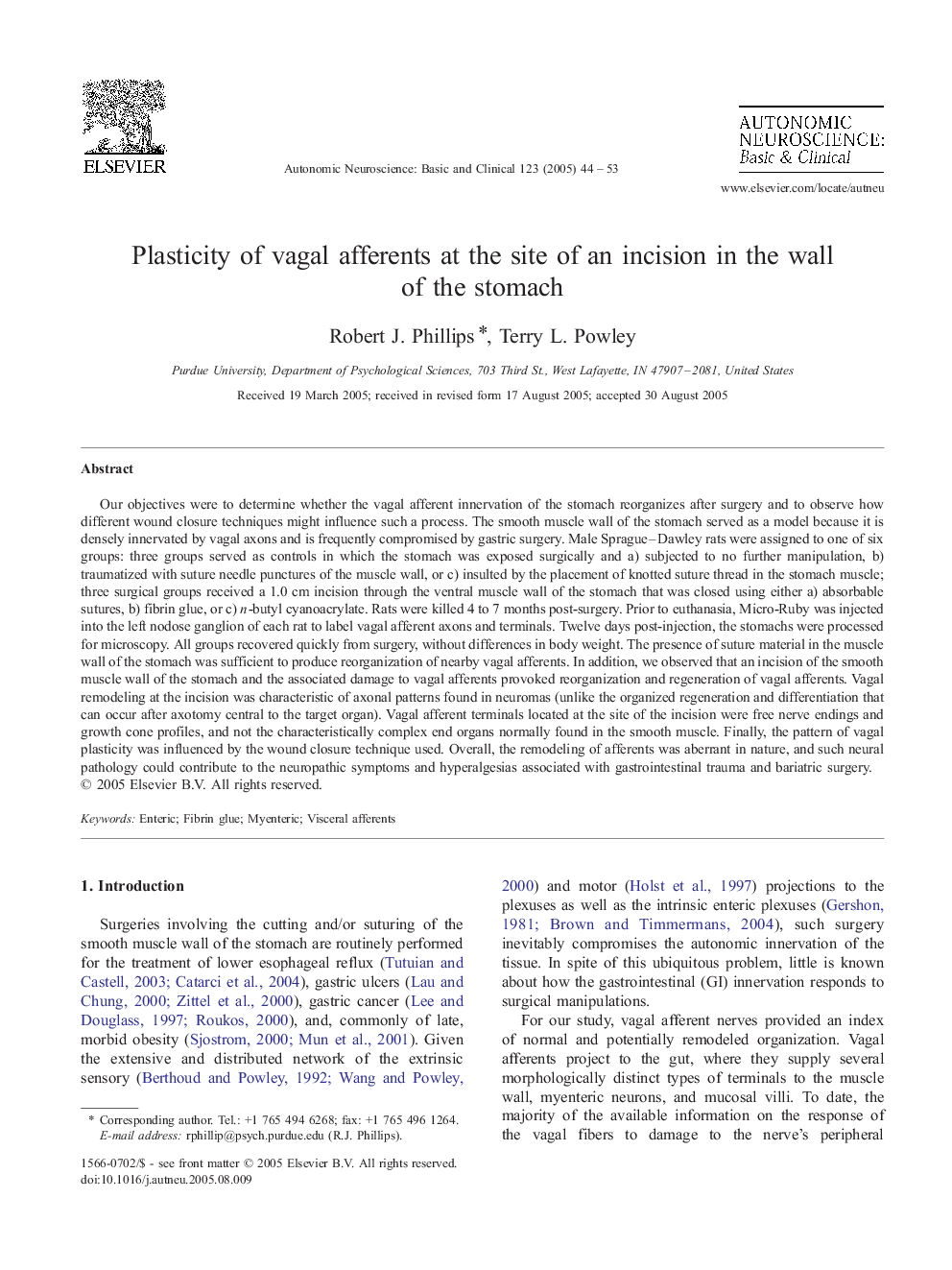| کد مقاله | کد نشریه | سال انتشار | مقاله انگلیسی | نسخه تمام متن |
|---|---|---|---|---|
| 9186504 | 1579586 | 2005 | 10 صفحه PDF | دانلود رایگان |
عنوان انگلیسی مقاله ISI
Plasticity of vagal afferents at the site of an incision in the wall of the stomach
دانلود مقاله + سفارش ترجمه
دانلود مقاله ISI انگلیسی
رایگان برای ایرانیان
موضوعات مرتبط
علوم زیستی و بیوفناوری
علم عصب شناسی
علوم اعصاب سلولی و مولکولی
پیش نمایش صفحه اول مقاله

چکیده انگلیسی
Our objectives were to determine whether the vagal afferent innervation of the stomach reorganizes after surgery and to observe how different wound closure techniques might influence such a process. The smooth muscle wall of the stomach served as a model because it is densely innervated by vagal axons and is frequently compromised by gastric surgery. Male Sprague-Dawley rats were assigned to one of six groups: three groups served as controls in which the stomach was exposed surgically and a) subjected to no further manipulation, b) traumatized with suture needle punctures of the muscle wall, or c) insulted by the placement of knotted suture thread in the stomach muscle; three surgical groups received a 1.0 cm incision through the ventral muscle wall of the stomach that was closed using either a) absorbable sutures, b) fibrin glue, or c) n-butyl cyanoacrylate. Rats were killed 4 to 7 months post-surgery. Prior to euthanasia, Micro-Ruby was injected into the left nodose ganglion of each rat to label vagal afferent axons and terminals. Twelve days post-injection, the stomachs were processed for microscopy. All groups recovered quickly from surgery, without differences in body weight. The presence of suture material in the muscle wall of the stomach was sufficient to produce reorganization of nearby vagal afferents. In addition, we observed that an incision of the smooth muscle wall of the stomach and the associated damage to vagal afferents provoked reorganization and regeneration of vagal afferents. Vagal remodeling at the incision was characteristic of axonal patterns found in neuromas (unlike the organized regeneration and differentiation that can occur after axotomy central to the target organ). Vagal afferent terminals located at the site of the incision were free nerve endings and growth cone profiles, and not the characteristically complex end organs normally found in the smooth muscle. Finally, the pattern of vagal plasticity was influenced by the wound closure technique used. Overall, the remodeling of afferents was aberrant in nature, and such neural pathology could contribute to the neuropathic symptoms and hyperalgesias associated with gastrointestinal trauma and bariatric surgery.
ناشر
Database: Elsevier - ScienceDirect (ساینس دایرکت)
Journal: Autonomic Neuroscience - Volume 123, Issues 1â2, 30 December 2005, Pages 44-53
Journal: Autonomic Neuroscience - Volume 123, Issues 1â2, 30 December 2005, Pages 44-53
نویسندگان
Robert J. Phillips, Terry L. Powley,